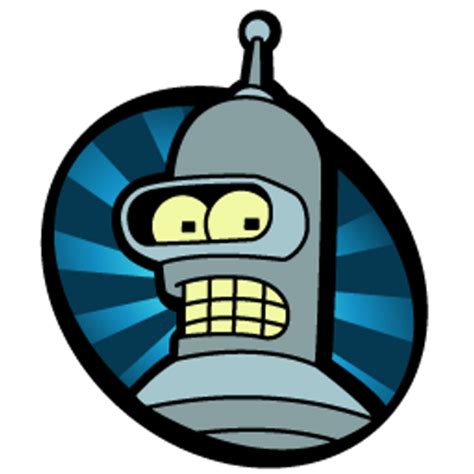There have been a number of Scientific discoveries that seemed to be purely scientific curiosities that later turned out to be incredibly useful. Hertz famously commented about the discovery of radio waves: “I do not think that the wireless waves I have discovered will have any practical application.”
Are there examples like this in math as well? What is the most interesting “pure math” discovery that proved to be useful in solving a real-world problem?
Riemann went nuts working on higher dimensional mathematics and linear algebra. At the time there was not a clear use case for math higher than like 3 or 4 dimensions, but he drove himself crazy discovering it anyways. Today, this kind of math underlies all of artificial intelligence
It’s imaginary numbers. Full stop. No debate about it. The idea of them is so wild that they were literally named imaginary numbers to demonstrate how silly they were, and yet they can be used to describe real things in nature.
I’m studying EE in university, and have been surprised by just how much imaginary numbers are used
I don’t really get 'em. It seems like people often use them as “a pair of numbers.” So why not just use a pair of numbers then?
I totally get your point, and sometimes it seems like that. Why not just use a coordinate system? Because in some applications the complex roots of equations is relevant.
If you square an imaginary number, it’s no longer an imaginary number. Now it’s a real number! That’s not something you can accomplish with something like a pair of numbers alone.
Because the second number has special rules and a unit. It’s not just a pair of numbers, though it can be represented through a pair of numbers (really helpful for computing).
Non-Euclidean geometry was developed by pure mathematicians who were trying to prove the parallel line postulate as a theorem. They realized that all of the classic geometry theorems are all different if you start changing that postulate.
This led to Riemannian geometry in 1854, which back then was a pure math exercise.
Some 60 years later, in 1915, Albert Einstein published the theory of general relativity, of which the core mathematics is all Riemannian geometry.
This won’t make any sense to any of you right now, but: E = md3
Does this count? Because it really is wtf.
The exact example I also thought of from the question! Well done
Doom absolutely counts!
Quake, not Doom. Doom didn’t use true 3D rendering and had almost no dynamic lighting.
Oops. I thought that weird approximated constant was somewhere in the doom sources… Thanks I guess for correcting me.
Imaginary numbers probably, they’re useful for a lot of stuff in math and even physics (I’ve heard turbulent flow calculations can use them?) but they seem useless at first
I work with a guy who is a math whiz and loves to talk. Yesterday while I was invoicing clients, he was telling me how origami is much more effective for solving geometry than a compass and a straight edge.
I’ll ask him this question.
My disclaimer: I don’t know what any of this means, but it might give you a direction to start your research.
First thing he came up with is Number Theory, and how they’ve been working on that for centuries, but they never would have imagined that it would be the basis of modern encryption. Multiplying a HUGE prime number with any other numbers is incredibly easy, but factoring the result into those same numbers is near impossible (within reasonable time constraints.)
He said something about knot theory and bacterial proteins, but it was too far above my head to even try to relay how that’s relevant.
I am pretty sure that the first thing you mentioned (multiplying being easy and factoring being hard) is the basis of public key cryptography which is how HTTPS works.
Somewhat related fun fact: One of the most concrete applications for quantum computers so far is breaking some encryption algorithms.
Tell him I would like to subscribe to his blog
The following aren’t necessarily answers to your question, but he also mentioned these, and they are way too funny to not share:
The Hairy Ball theorem
Cox Ring
Tits Alternative
Wiener Measure
The Cox-Zucker machine (although this was in the 70s and it’s rumored that Cox did most of the work and chose his partner ONLY for the name. 😂)
Origami can be used as a basis for geometry:
http://origametry.net/omfiles/geoconst.html
IIRC, you can do things that are impossible in standard Euclidean construction, such as squaring the circle. It also has more axioms than Euclidean construction, so maybe it’s not a completely fair comparison.
Integration.
Integration was literally developed to be useful
Donuts were basis of the math that would enable a planned economy to be more efficient than a market economy (which is a very hard linear algebra problem).
Basically using that, your smart phone is powerful enough to run a planned economy with 30 million unique products and services. An average desktop computer would be powerful enough to run a planned economy with 400 million unique products and services.
Odd that knowledge about it has been actively suppressed since it was discovered in the 1970s but actively used mega-corporations ever since…
It’s funny that you’re saying this is “actively suppressed” while not naming this field or providing links for further readings.
Donut mathematics is the name of the field; I literally named it. The writings on it are dense and only available in Russian and Mandarin Chinese. Further I provided the name of an author on the subject.
What would you call the purposeful prevention of English/French/German/etc translations of the material?
The phrase “donut mathematics” was not in your earlier comment. You literally did not name it.
That’s pretty interesting. Do you happen to have any introductory material to that topic?
I mean, it might even have applications outside of running a techno-communist nation state. For example, for designing economic simulation game mechanics.
Well Wassily Wassilyevich Leontief won a Nobel prize in economics for his work on this subject that might help you get started
There’s no such thing as a Nobel Prize in economics. Economists got salty about this and came up with the Sveriges Riksbank Prize in Economic Sciences in Memory of Alfred Nobel, and rely on the media shortening it to something that gets confused with real Nobel Prizes.
Fair point
Maybe they’re scared that project Cybersyn would actually work
How do you define “pure math discovery”?
A math discovery unmotivated by research in other fields; just discovering math to see if it works out
With that as the definition I would say Boolean Algebra.
deleted by creator











